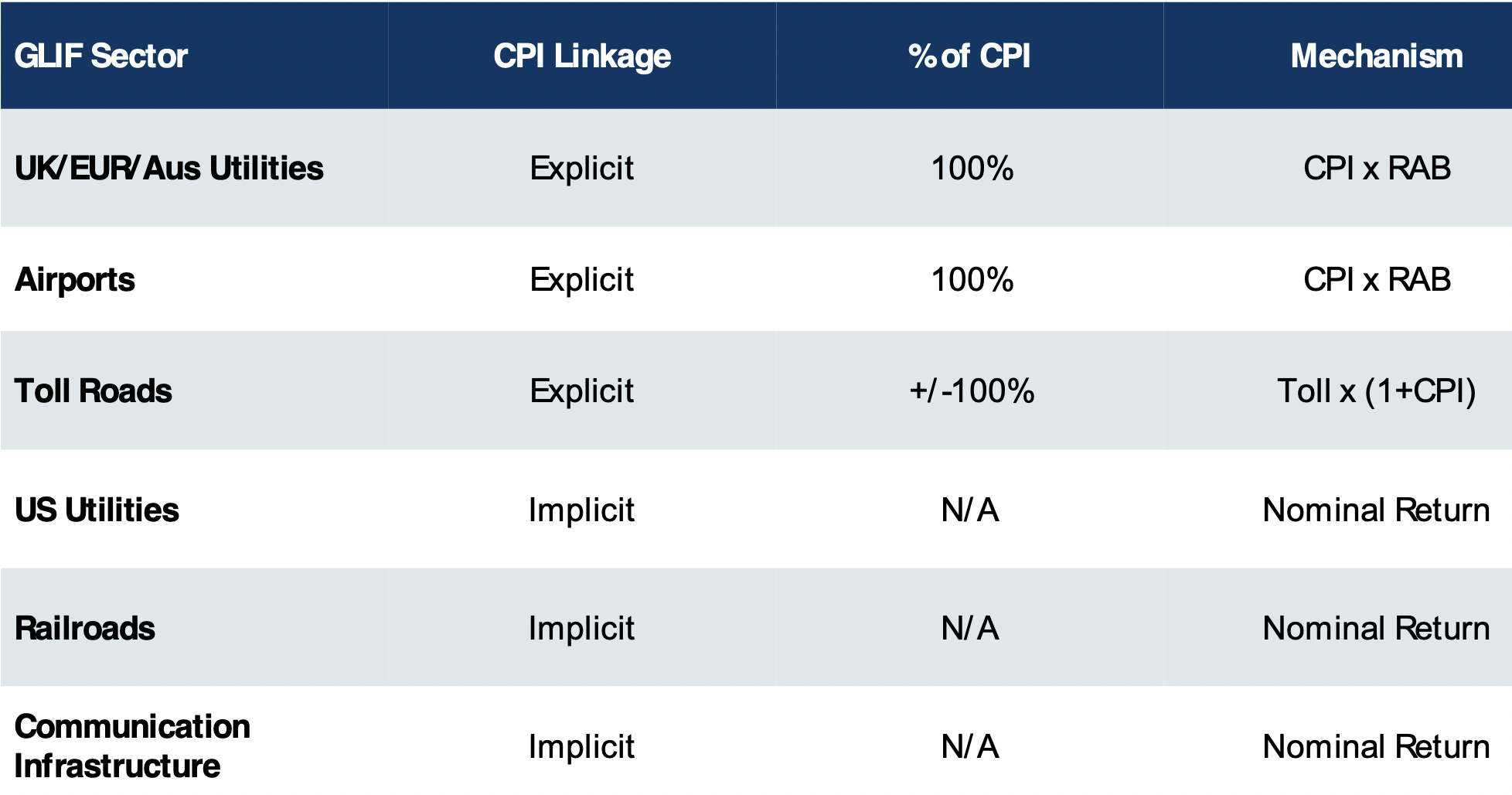An asset for all seasons
Infrastructure has a well-earned reputation as a portfolio diversifier, especially when inflation ticks up.
Which is a good thing at the moment, because inflation is ticking up. The US just copped a November inflation rate of 6.8%, the highest monthly increase in prices since June 1982.
This clearly hasn’t been lost on Livewire readers. Early indications from our readers survey place infrastructure third among assets you’re thinking about increasing your exposure to over the next year.
But unlike more homogenous asset classes such as gold, infrastructure varies quite a lot. Not all of it provides inflation protection so it’s important know what to look for.
For this collection, I reached out to four fund managers to get their insights on how infrastructure can be a bulwark against inflation, the implication of government infrastructure spending on it, as well as some specific stocks they currently have their eyes on.
A protected investment
Sarah Lau, Resolution Capital
Infrastructure is considered a good long-term interest rate hedge because of its strong barriers to entry and pricing power. Some assets have explicit regulatory or contractual links to inflation and others operate in a ‘lighter touch framework’ where they can achieve real price growth. For example, many toll roads have their annual toll increases linked to inflation.
Monopolistic regulated assets such as utilities typically earn a premium above a risk-free rate.
Long-term, there is a strong correlation between inflation and interest rates. Periodically, when a utility’s allowed returns undergo regulatory review, earnings are impacted by either higher or lower interest rates.
In certain jurisdictions, returns are set by the regulator on a real basis and higher inflation automatically leads to higher revenues. Further, the regulated asset base of increases every year by inflation. Thus, investors are fully compensated for the effects of inflation in both current and future earnings.
For less regulated infrastructure companies to be considered for portfolio inclusion, their assets need to demonstrate strong barriers to entry and being essential to society. North American freight rail fits this description well and, as such, they can increase their prices above inflation. Rail shipper rates are set to increase meaningfully in 2022.
Choose carefully
Warryn Robertson, Lazard Asset Management
Investors need to understand how inflation works through the regulatory contracts that govern the individual asset’s revenue or return model.
The majority of infrastructure assets listed on public markets do not have either monopoly-like positions or guaranteed inflation protection in regulatory arrangements.
For example, independent merchant power generators, which make up a large proportion of infrastructure indices, are not inflation-protected. There is an implied arrangement that they may pass-through costs in time, but that is very different to many of the companies in our Preferred Infrastructure Universe, which have regulatory or contractual arrangements that automatically adjust with inflation. Our research shows that approximately 75% of listed infrastructure stocks do not provide direct inflation protection.
The below table depicts the level of inflation protection of stocks in our universe, which we call Preferred Infrastructure. UK, European and Australian utilities, airports and toll roads have direct, explicit inflation pass through. US utilities, railroads and communication infrastructure returns are implicitly linked to inflation, though the earnings level is typically set by a regulator and this can move away from the CPI level for a period of time until the regulator adjusts the return level.

Source: Lazard. As of 30 September 2021.
We believe the fact that companies in our universe have inflation-protected earnings is one of the key differences between our Preferred Infrastructure Universe and infrastructure indices.
The debt on company balance sheets is another key consideration as the yield curve steepens. There are some stocks that we will not invest in because of leverage risk. Many of our Preferred Infrastructure stocks do have high, but in our view manageable, debt levels. Debt needs to be viewed in the context of the quality of the asset and the degree of inflation protection in the earnings. There are a number of infrastructure stocks that we believe could be undone if this trade-off is not understood.
The other key consideration with inflation is the interplay between price multiples and discount rates (or interest rates). We believe we may see structurally higher inflation over the coming years. Even modestly higher inflation that leads to higher assumed interest rates can have a major impact on asset prices when many valuation models appear to have permanently lowered discount rates.
Domestic pure plays are few and far between
Tim Humphreys, Ausbil
Infrastructure as an asset class is certainly the centrepiece of critical fiscal spending, for example, the building of the Sydney Harbour Bridge during the Great Depression of the late 1920s and early 30s. Public infrastructure benefits from government spending, but the reason this is vexed for Australian investors is the critical question: How can I invest in this? There is a strong emergent theme of infrastructure privatisation, largely by huge pension and super funds, and this is taking local infrastructure out of play for many investors. Add to this private equity, and many of the large investable assets are vanishing. Most of the opportunity in this regard sits in offshore markets.
The ASX-listed infrastructure space, at its height, had over 15 listed companies.
Many of these companies were listed over the period spanning 1995 to 2010. For example, Transurban was listed in 1996 with a single toll road concession, Citylink in Melbourne. APA Group was spun-out of AGL Energy in 2000 with ownership interests in four gas transmission pipelines in Australia. Spark Infrastructure and AusNet Services were both listed as IPOs in 2006 by private owners. Spark Infrastructure has just been delisted following its acquisition by Kohlberg Kravis Roberts and the Ontario Teachers’ pension fund. The long-term lease to operate Sydney Airport was acquired by Macquarie Group, who in turn listed it through IPO, together with interests in some European airports in 2009. Both APA Group and Transurban have embarked on significant M&A activity, including taking over listed companies, and participating in sizeable M&A of other companies and assets in their respective areas of expertise.
We are now seeing this with the super fund consortium seeking to acquire Sydney Airport and an offer for AusNet Services. Figure 1 illustrates the path from over 15 listed infrastructure assets towards none.
Source: Ausbil. Note that the dots indicate listing dates. No dot indicates listed prior to 2005.
Assuming the Sydney Airport and AusNet complete in one form or another, there is potentially only going to be four ASX-listed infrastructure companies that meet Ausbil’s Essential Infrastructure criteria listed on the ASX. These are Transurban (TCL), Atlas Arteria (ALX), APA Group (APA) and Auckland Airport (AIA, dual listed on the ASX and NZX). Two other listed infrastructure companies, Aurizon Holdings (AZJ) and Dalrymple Bay Coal Terminal (DBI), do not meet Ausbil’s strict definition of Essential Infrastructure and are excluded from our investment universe.
Should the proposed acquisition of AusNet Services succeed (following the privatisation of Spark Infrastructure), there will be no listed regulated utility on the ASX. There is no listed mobile phone tower company on the ASX, with the recent sale of 49% in Telstra’s towers going to the Future Fund and other super funds. Moreover, following the takeovers of Infigen and Tilt, there is no pure-play renewable energy company listed on the ASX, leaving the only options for pure-play renewables exposures in offshore companies, such as global renewable powerhouses like NextEra and Ørsted.
Overweight user-pay
Sarah Shaw, 4D Infrastructure
In the current environment, 4D is overweight User Pay assets, and within the Regulated Utility sector favours those with real returns to capitalise on both the return of inflation and the economic stimulus moving through the economy.
One well-known User Pay asset is Transurban (TCL), Australia’s largest privately-owned toll road developer, owner and operator. The company has a presence in five markets across Australia and North America, with interests in 23 concessions with an average remaining concession life of about 30 years. TCL also has a significant pipeline in development and delivery across these jurisdictions, requiring deployment of capital and debt over the near to medium term.
TCL has a somewhat unique portfolio of assets, whereby depending on the concession, annual toll increases may allow for inflation (typical for road concessions), the higher of an agreed percentage (4%) or actual inflation, or a fixed increase (4.25%). The latter two tolling arrangements are particularly attractive in low inflation environments as tolls still move up by 4-4.25% pa. In high inflation environments, inflation is fully passed through in all but two concessions which have the fixed cap. The vast majority of these concessions stipulate that tolls cannot be lowered as a result of deflation.
Historically, traffic growth has been relatively predictable and collectively, as a network, has outpaced GDP growth. Further, TCL’s existing debt and interest expense profile is 99.8% interest rate hedged (30 June 2021). As such, the only impact to earnings in the nearer term from any interest rate hikes comes from new debt issues at a higher cost.
TCL, like the majority of User Pay assets, sees a positive earnings and valuation shift in the current inflationary environment and is well positioned to capitalise on stimulus programs in Australia and the USA.
Takeaway
User-pay infrastructure assets that have high barriers to entry coupled with the ability to change their prices seem to do well in inflationary environments. Toll roads are a perfect example of this kind of price setting: they can link their tolls to the consumer price index without seeing a significant change in demand.
But as Tim Humphreys notes, these assets aren't thick on the ground in Australia, and rampant M&A action looks set to reduce the number further. So the global market may offer up more options to get that inflation hedge.
Never miss an update
Enjoy this wire?
Hit the 'like' button to let us know. Stay up to date with my content by hitting the 'follow' button below and you'll be notified every time I post a wire.
2 topics
3 stocks mentioned
4 contributors mentioned

